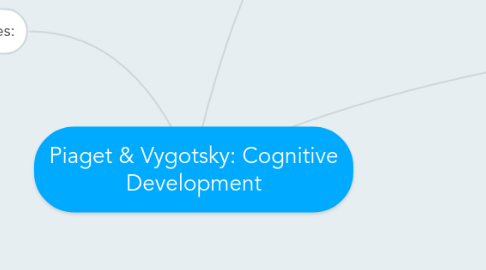
1. Examples:
1.1. Zygotsky's ZPD : A preschool child learning through social interactions, such as make-believe play at centers (i.e., kitchen, family care) is instrumental in the development process. This learning is embraced and encouraged. Learning to play as a make-believe teacher, helps a child understand the role of the educator while developing coping and social skills.
1.1.1. Piaget's Cognitive Development: A child that is being fed will learn the difference of hot and cold, through their own experience with temperature. This is during the infant to toddler stages. Basically through zero to 2 years of age.
2. Comparison and Contrast: A look into the two theories
2.1. The theories vary by assumptions.
2.1.1. Piaget proposes that children proceed through four stages of maturation. Vygotsky proposes that cultural and social interactions aid in development.
2.1.1.1. Piaget : Children learn actively, constructing knowledge from their environment. Four stages: sensorimotor, preoperational, concrete operations, formal operations. Cognitive Development is experienced from infant to young adult stages.
2.1.1.1.1. Vygotsky: Children learn through informal and formal conversations with adults. Complex mental activities begin as basic social activities. Children can perform difficult tasks with the help of a more advanced individual.
3. Applying Theories:
3.1. Piaget:
3.1.1. A child between the ages of zero and two is learning by way of thier own sensory skills.
3.1.1.1. A child will develop individually, therefore children of the same age group should be encouraged to learn at their own pace.
3.2. Vygotsky:
3.2.1. If a child is learning a task through independence, the teacher should allow this to happen. This supports ZPD.
3.2.1.1. A child will transition from assisted to independent learning gradually. This is strongly supported.
